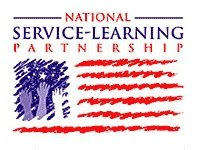[from the America's Promise Bulletin]
Getting citizens more involved in the civic life and health of their communities must begin with citizens themselves, according to a new study by The Case Foundation.Citizens at the Center: A New Approach to Civic Engagement offers specific recommendations for giving citizens the tools they need to identify problems and develop solutions, and warns against top-down solutions that require people to "plug into" existing programs or campaigns.
Authored by Dr. Cynthia Gibson, Citizens at the Center is based on interviews with scores of leaders in the service/civic engagement, political and marketing fields; the findings of scholarly research; and numerous mainstream articles, Web sites and publications. The report suggests that, while volunteering and voting are on the rise, especially among young people, many Americans feel powerless to do anything about the problems that affect them and that there is little connection between them and their public institutions and leaders.
Citizens at the Center also finds that many Americans have turned away from politics and political institutions for the same reasons they have turned away from other civic institutions. There is a sense that what they do matters little when it comes to the civic life and health of their communities or the country. Shifting to an approach that puts citizens at the center is a powerful way to help ordinary people take action on the problems that are most important to them, and in the ways they choose.
The report offers several steps the service and civic engagement field can take to advance "citizen-centered" approaches:
- Shift the focus. Instead of asking how to encourage civic engagement, consider the best ways to give people opportunities to define and solve problems themselves.
- Start young. Don't wait until high school to begin developing the basic skills that young people will need to be effective problem-solvers.
- Involve all community institutions. Engage faith-based organizations, schools, businesses, and government in providing public deliberation and problem-solving for all citizens.
- Use technology to create a new kind of "public commons." Leverage technology's power to encourage, facilitate, and increase citizen-centered dialogue, deliberation, organizing and action around a wide variety of issues.
- Explore and create new mechanisms. Don't assume that traditional venues like town hall meetings are sufficient to truly get different types of people to engage and share perspectives. Look at where people are already interacting (such as neighborhood organizations, schools and workplaces) and consider other approaches, structures and venues.
- Conduct rigorous research about what works and why. While considerable research has been conducted on the levels of volunteering, voting, community service and political participation, there is a need for more evaluation about the motivating forces behind such behaviors – and what approaches are effectively solving community problems.
- Encourage more funding for these approaches. Many funders may be reluctant to support long-term, local efforts, preferring to support bigger initiatives with a more immediate "payoff." Attracting more funding will require demonstrating the concrete results of local deliberation and action.
- Help communities move from deliberation to action. Deliberation should serve as a means to the end of communities being able to take action collectively in ways that reap results they can see and experience.




No comments:
Post a Comment